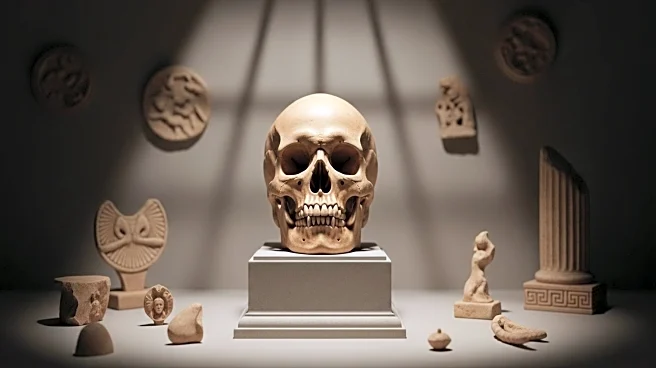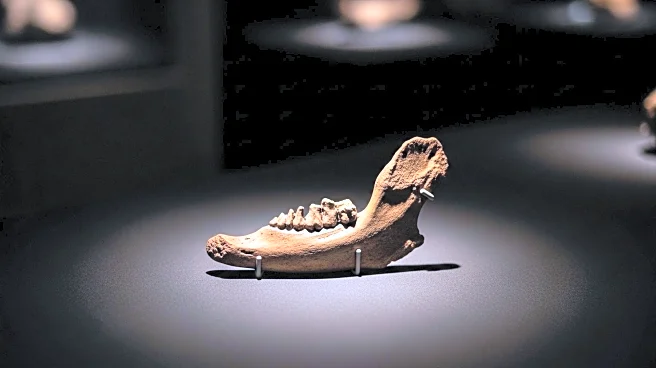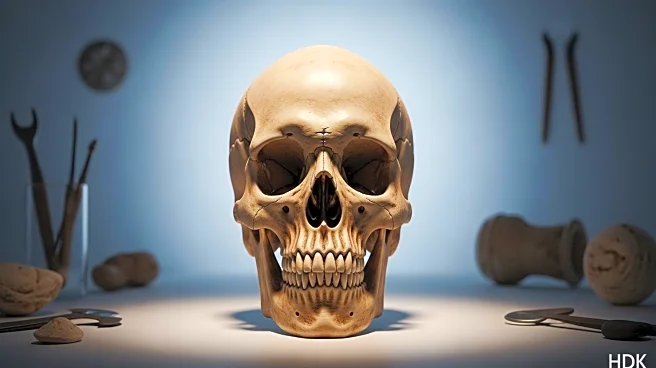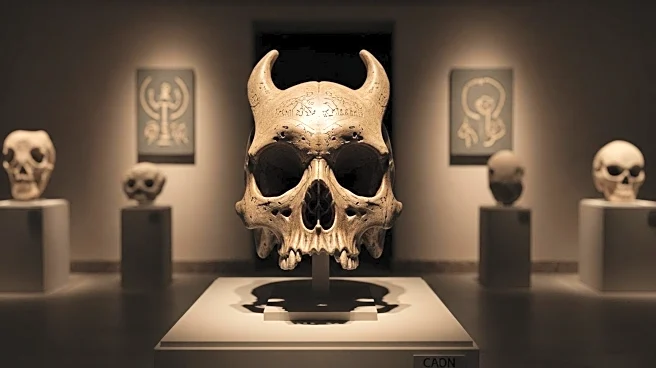What is the story about?
What's Happening?
A team of international researchers has determined the age of the Petralona cranium, a significant human fossil found in Greece, to be at least 286,000 years old. This discovery places the skull in the Middle Pleistocene era, providing new insights into human evolution. The study, published in the Journal of Human Evolution, utilized advanced uranium-series dating techniques to analyze calcite on the skull. The findings suggest that the skull belonged to a primitive human population, possibly Homo heidelbergensis, which coexisted with emerging Neanderthals. This challenges previous assumptions about the fossil's age and its evolutionary context.
Why It's Important?
The accurate dating of the Petralona cranium reshapes the understanding of human prehistory in Europe, particularly in southeastern regions. It suggests that archaic human populations existed alongside Neanderthals much later than previously thought. This discovery could lead to a reevaluation of the evolutionary timeline and the interactions between different human species. The findings highlight the complexity of human evolution, emphasizing that it is not a linear process but rather a branching history with multiple coexisting populations.
What's Next?
Further research is expected to continue, focusing on the implications of this discovery for the broader understanding of human evolution. Scientists may explore additional fossils in the region to gain more insights into the interactions between different human species. The study also opens up new avenues for examining the migration and adaptation patterns of early human populations in Europe.
Beyond the Headlines
The study raises questions about the methods used in previous dating attempts and the assumptions made about the fossil's discovery. It also highlights the importance of using advanced scientific techniques to obtain accurate data, which can significantly alter historical narratives.
AI Generated Content
Do you find this article useful?















